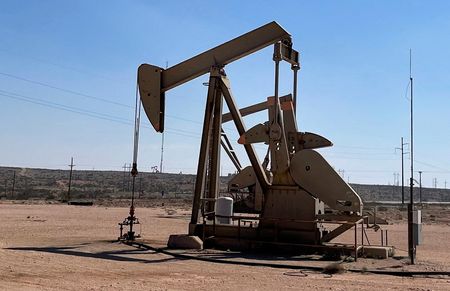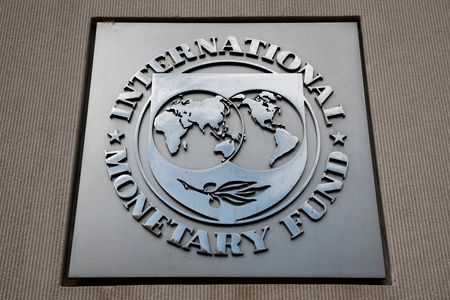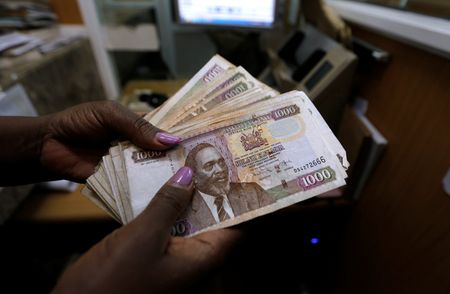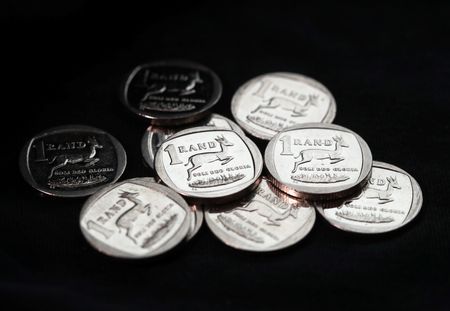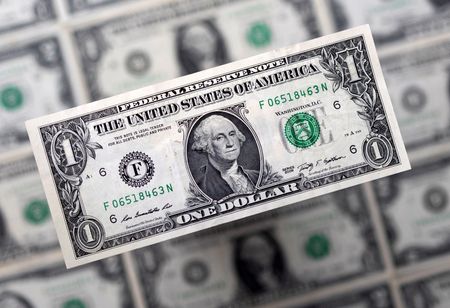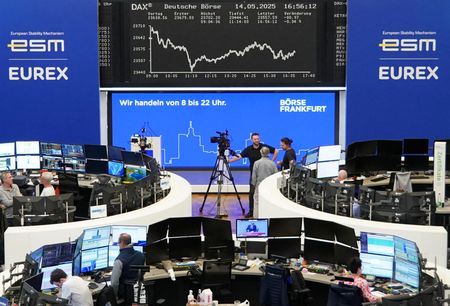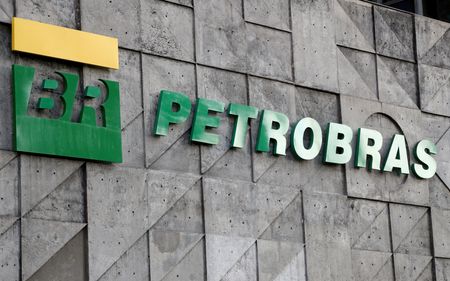By Yuka Obayashi and Emily Chow
TOKYO (Reuters) -Oil prices fell by about $2 on Thursday on expectations of a potential U.S.-Iran nuclear deal that could result in sanctions easing, while a surprise build in U.S. crude oil inventories last week heightened investor concerns about oversupply.
Brent crude futures fell $2.16, or 3.3%, to $63.93 a barrel by 0657 GMT. U.S. West Texas Intermediate (WTI) crude futures slid $2.10, or 3.3%, to $61.05.
Both benchmarks lost about 0.8% on Wednesday.
Iran is willing to agree to a deal with the U.S. in exchange for the lifting of economic sanctions, an Iranian official told NBC News in an interview published on Wednesday.
“Fresh selling was triggered by expectations that a U.S.-Iran nuclear deal would ease recently tightened U.S. sanctions on Iran, potentially loosening the global crude supply-demand balance,” said Yuki Takashima, economist at Nomura Securities.
Saudi Arabia fully supports the U.S.-Iran nuclear talks and hopes for positive results, the kingdom’s foreign minister Prince Faisal bin Farhan Al-Saud said on Wednesday.
Washington issued sanctions on Wednesday to target Iranian efforts to domestically manufacture components for ballistic missiles, the U.S. Treasury Department said, following Tuesday’s sanctions on some 20 companies in a network that it said has long sent Iranian oil to China.
The sanctions came following a fourth round of U.S.-Iran talks in Oman aimed at addressing disputes over Iran’s nuclear programme.
The surprise rise in U.S. inventories overnight is also weighing on prices as is profit taking after crude oil rebounded towards the top of its recent $55-65 per barrel range, said Tony Sycamore, an analyst at IG.
“My forecast is we continue to see a range bound market for the next month or so, however barring an unexpected geopolitical shock, when the range does give way it will be to the downside, towards $50 per barrel,” he said.
Data from the Energy Information Administration showed crude stockpiles rose by 3.5 million barrels to 441.8 million barrels in the week ended May 9, compared with analysts’ expectations in a Reuters poll for a 1.1 million-barrel draw. [EIA/S]
API industry data also showed a large build of 4.3 million barrels in crude stocks last week, market sources said on Tuesday. [API/S]
The Organization of the Petroleum Exporting Countries and allied producers, known as OPEC+, has been increasing supply, although OPEC on Wednesday trimmed its forecast for growth in oil supply from the United States and other producers outside the wider OPEC+ group this year.
(Reporting by Yuka Obayashi in Tokyo and Emily Chow in Singapore; Editing by Christopher Cushing and Sonali Paul)

